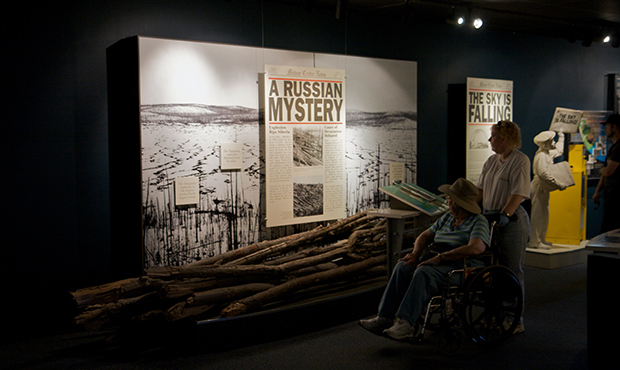Remember the 1908 Tunguska event on this year’s Asteroid Day
Jun 26, 2018, 2:00 PM
There is not a week that goes by without hearing about news of another close call with another small asteroid or a large meteor.
Just this past week, the Earth was struck by yet another small object: A 3- or 4-meter wide little asteroid that hit the ground in Russia.
There are now some 18,000 or so cataloged asteroids which make close passes of the Earth and there is not a lot what we can do to prevent or predict when the next one will place us in harm’s way.
Some say that there may be upwards of 40 or so large asteroids which are still yet to be detected within a short distance of our planet and that the ones which approach Earth from the dayside of our planet. They could range in size up to 3 miles in diameter.
If one of these did hit the Earth, a fireball nearly 40 miles in size would create a global debris storm, blacking out the sun for years to come.
Many of you know about the great asteroid impactor, which hit the Earth some 65 million years ago and wiped out many forms of life, including the dinosaurs.
We have been spared a repeat of this type of event, but one event which occurred in the northern portion of Siberia in Russia is less known to many.
On the morning of June 30, 1908 around 7:15 a.m. local time, in deep forests of Siberia, a huge fireball, bright as the Sun, exploded over the tiny villages of this remote region of Russia.
This may have been caused by a small asteroid or an even smaller piece of a comet.
When the object exploded over the region, the kinetic energy inside the object unleashed with the explosive force of between 10-15 megatons of energy.
This explosion, which occurred around three to six miles above the region, leveled an area of well over 770 square miles. That is like wiping out the entire area a little smaller than the state of Rhode Island in a flash!
This has been the largest impact event in recorded history and many do not even know about this. No known human casualties, but many animals, trees and plant life all perished in an instant.
The Tunguska object may have been as large as 600 feet in diameter. For reference, the great Arizona meteor crater asteroid is thought to have been around 200 feet in diameter.
The Tunguska blast is thought to have fallen at least 80 million trees and the blast may have registered as a plus-5 on the Richter scale.
Today, NASA is looking for ways to alert us to any incoming objects like this, but the truth is that not much can be done to ever prevent this type of natural disaster.
So, while you are going about your day on Saturday, know that this is now officially known as Asteroid Day 2018!
To print your very own June 2018 star chart, click here. To view satellites/dates/times of passage, click here.










